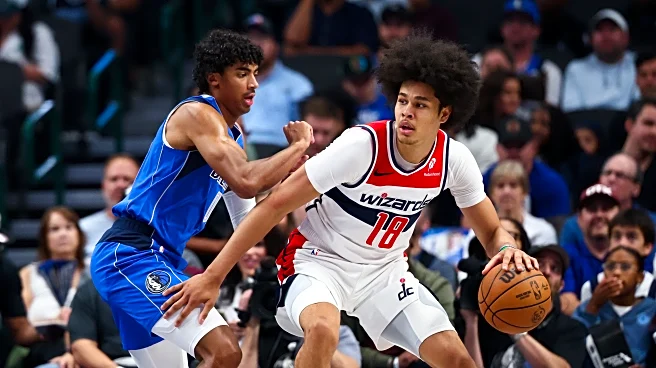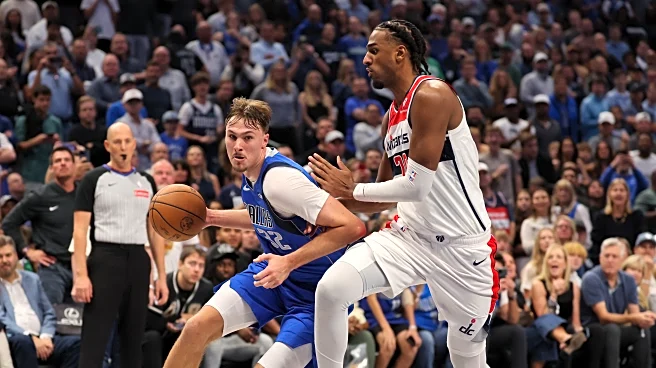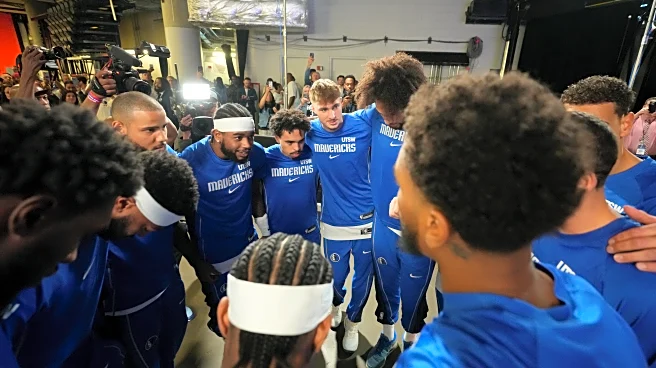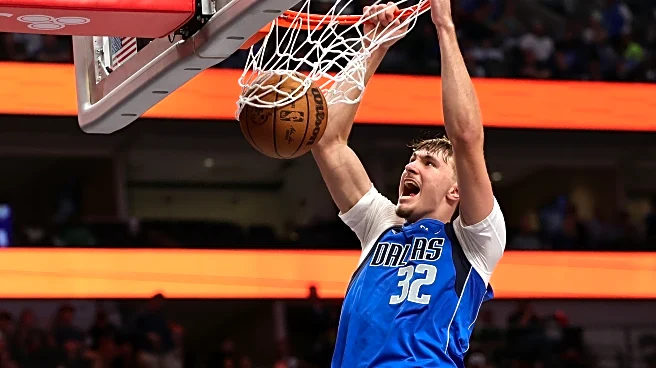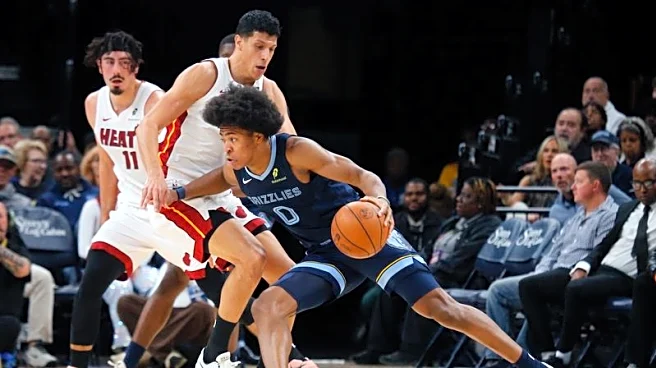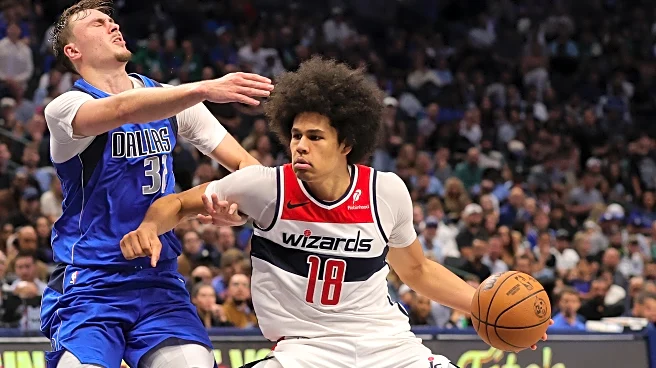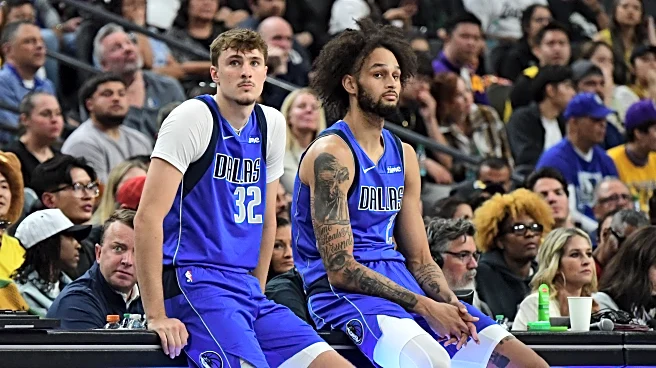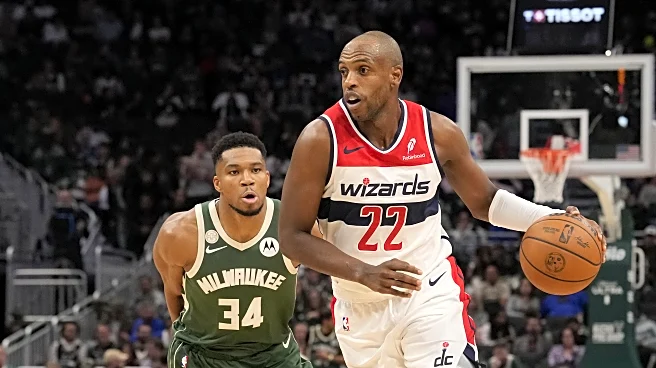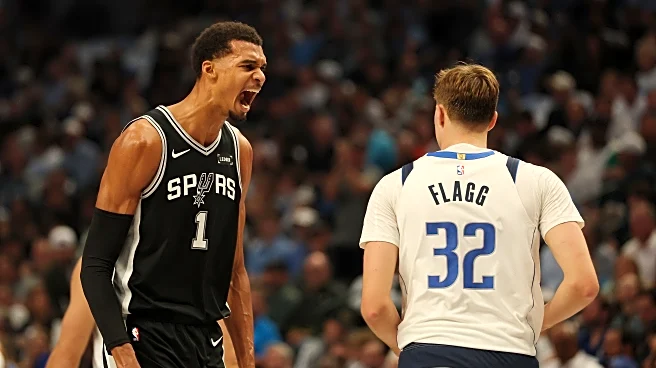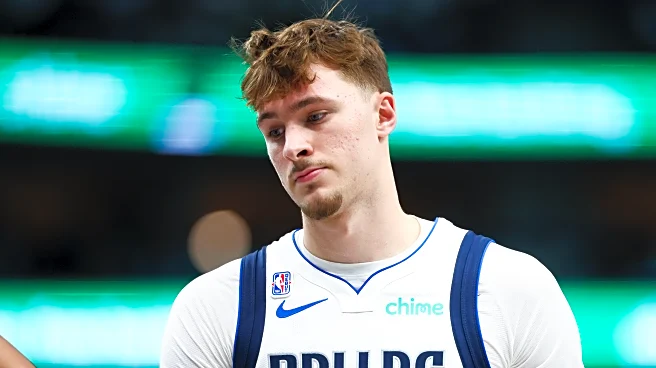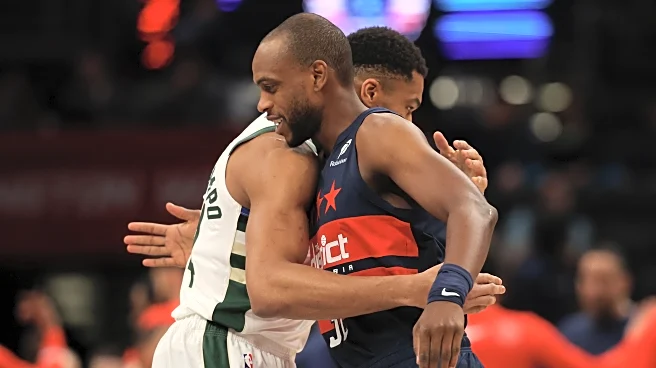
The Washington Wizards beat the Dallas Mavericks for their first win of the season in a game that was hard-fought, entertaining, and incredibly encouraging.
I know — I’m aways the one telling folks not
to take too much from one game. And I’m saying it now in part to get myself to tap the brakes. Because this was fun and inspires hope.
The story of this one was the performance of Kyshawn George — career highs in points and rebounds (34 and 11), plus four assists, two steals, three blocks, and probably another dozen high-quality defensive plays. What should worry opponents and make Wizards fans grin: while it’s unlikely he’ll shoot any better (11-15 from the floor, 7-9 from three), he can play better.
Last night, he committed five turnovers (three were just youthful sloppiness) and five fouls (3-4 were thoroughly unnecessary). But let’s pause for a moment to appreciate what he did — 34 points, 11 rebounds, 4 assists, a PPA of 362 (more on PPA below)…and…he…could…have…played…better.
Wait, you want more to be encouraged about? The Wizards got you. They won against the Mavericks while their designated veteran leaders stunk. Khris Middleton shot poorly (4-13) and was a turnstile on defense. CJ McCollum hit just 2-8 from the floor (1-4 from deep), though he did produce five assists. He could not plausibly be accused of defending well.
The Wizards won because the kids played well. Alex Sarr battled inside against Anthony Davis and Dereck Lively and finished the night with 14 points on 5-10 shooting to go with 9 rebounds, 5 assists, and 3 blocks. The four turnovers were a bit much, but it was a solid game against strong opponents.
Tre Johnson, the 19-year-old rookie, came off the bench to bomb the Mavericks with 17 points in 26 minutes. The (yes, I want to say this again) 19-year-old rookie shot 7-13 from the floor and 3-6 from deep in his first NBA game in his hometown.
The Wizards did get some contributions from veterans — a solid floor game from Corey Kispert (3-5 shooting, 4 rebounds, 4 assists), and a competitive and productive night from Marvin Bagley III (10 points and 4 rebounds in 15 minutes).
As long as we’re handing out flowers, toss a few to Brian Keefe and the coaching staff. At halftime, a Mavericks assistant told the Dallas sideline reporter that the Wizards wanted to play fast and shoot threes, and that Dallas needed to get them into a half court contest if they were going to make a second half comeback. The Mavericks failed in that quest.
While helped along by Dallas’ poor roster construction — two injuries left the team with zero competent guards — Washington’s defense was impressive. Sure, Wizards defenders at times failed to contain dribble penetration, and they let Davis, Lively and P.J. Washington get inside too often, but they were also active and all over the place. They harassed Dallas’ incompetent guards, and pushed ball handling responsibilities onto players (like Washington — 8 turnovers, and Davis, 5 turnovers) ill-suited for them.
The Mavericks are calling 6-9 Cooper Flagg a guard. And while he has impressive skills (especially in that fourth quarter), he’s…well…not a guard. They desperately need Kyrie Irving back. Dante Exum might at least stabilize the backcourt, but there’s no timetable for his return. Yikes.
Four Factors
Below are the four factors that decide wins and losses in basketball — shooting (efg), rebounding (offensive rebounds), ball handling (turnovers), fouling (free throws made).
The four factors are measured by:
- eFG% (effective field goal percentage, which accounts for the three-point shot)
- OREB% (offensive rebound percentage)
- TOV% (turnover percentage — turnovers divided by possessions)
- FTM/FGA (free throws made divided by field goal attempts)
In the table below are the four factors using the percentages and rates traditionally presented.
Stats & Metrics
PPA is my overall production metric, which credits players for things they do that help a team win (scoring, rebounding, playmaking, defending) and dings them for things that hurt (missed shots, turnovers, bad defense, fouls).
PPA is a per possession metric designed for larger data sets. In small sample sizes, the numbers can get weird. In PPA, 100 is average, higher is better and replacement level is 45. For a single game, replacement level isn’t much use, and I reiterate the caution about small samples sometimes producing weird results.
POSS is the number of possessions each player was on the floor in this game.
ORTG = offensive rating, which is points produced per individual possessions x 100. League average so far this season is 115.1. Points produced is not the same as points scored. It includes the value of assists and offensive rebounds, as well as sharing credit when receiving an assist.
USG = offensive usage rate. Average is 20%.
ORTG and USG are versions of stats created by former Wizards assistant coach Dean Oliver and modified by me. ORTG is an efficiency measure that accounts for the value of shooting, offensive rebounds, assists and turnovers. USG includes shooting from the floor and free throw line, offensive rebounds, assists and turnovers.
+PTS = “Plus Points” is a measure of the points gained or lost by each player based on their efficiency in this game compared to league average efficiency on the same number of possessions. A player with an offensive rating (points produced per possession x 100) of 100 who uses 20 possessions would produce 20 points. If the league average efficiency is 114, the league — on average — would produced 22.8 points in the same 20 possessions. So, the player in this hypothetical would have a +PTS score of -2.8.
Players are sorted by total production in the game.
